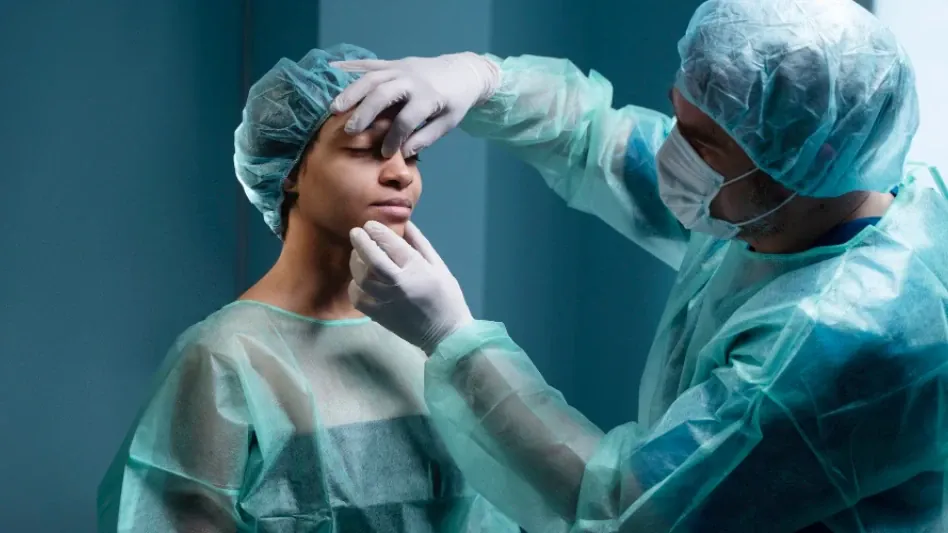The Australian cosmetic industry is experiencing rapid growth, with a market value of approximately $1.5 billion. This surge is fueled by increasing acceptance of cosmetic procedures and a growing number of clinics offering these services. However, this expansion brings to light the urgent need for stronger regulation, better oversight, and stricter enforcement of safety standards to protect patients.
The Need for Improved Safety Measures
Advocacy for Enhanced Oversight
The Australian Society of Plastic Surgeons (ASPS) has been at the forefront of advocating for better safety measures and oversight within the cosmetic industry. High-profile cases of patient harm during cosmetic procedures underscore the need for stricter regulations. In some instances, these procedures have led to adverse outcomes such as severe infections, disfigurement, and even fatal complications, prompting calls for immediate action to ensure patient safety. The ASPS’s efforts are aimed at creating a more robust regulatory environment that enforces standardized care across the industry.
An independent review completed in August 2022 revealed significant gaps in the current regulatory framework, highlighting that the cosmetic sector operates somewhat outside existing health system frameworks. This review exposed inadequacies in how cosmetic procedures are governed, indicating that regulations primarily focus on practitioner titles rather than comprehensive safety protocols for performing these procedures. The existing setup allows for a wide divergence in the quality of care, leaving patients vulnerable to substandard practices and potential harm. Therefore, the call for improved regulation is not just a matter of professional integrity but a crucial public health issue.
Regulatory and Legislative Changes
In response to the review, the Medical Board of Australia and the Australian Health Practitioner Regulation Agency (Ahpra) updated their guidelines for medical practitioners performing cosmetic surgery. These updates focus on the accurate representation of practitioners’ training and experience but fall short of mandating specific training levels or hospital admission privileges for managing complications. While these guidelines are a step forward, critics argue that they do not go far enough in ensuring only qualified professionals undertake such procedures. For example, there are no stringent requirements for continuous professional development or specific qualifications related to cosmetic surgery.
More impactful have been amendments to the Health Practitioner Regulation National Law Act 2009, restricting the use of the term “surgeon” to recognized specialists, aiming to help patients better understand practitioners’ qualifications. This change is significant as it eliminates the previously widespread misuse of titles like “cosmetic surgeon,” which confused patients about the actual expertise of their healthcare providers. This legislative amendment is expected to create a clearer distinction between fully qualified surgeons and other practitioners, thus aiding patients in making more informed decisions about their healthcare options.
Addressing Non-Surgical Cosmetic Procedures
Concerns and Risks
Attention is now turning to non-surgical cosmetic procedures, which share similar safety and regulation concerns as surgical ones. These treatments can be both lucrative and hazardous, especially when performed by individuals lacking proper training or experience. Non-surgical procedures, including fillers, Botox injections, and laser treatments, have surged in popularity due to their promise of quick results with minimal downtime. However, this has also led to an influx of underqualified providers offering these services at lower prices, often compromising on safety and quality.
The industry operates like a free market, driven by patient demand and provider competition, which poses risks of unintended or inappropriate treatments and temptations for practitioners to overstep their expertise. Cases have emerged where non-surgical treatments resulted in severe complications, such as infections, nerve damage, and allergic reactions, due to improper administration. The lack of stringent regulatory oversight in this sector means that many providers operate without accountability, increasing the risk of harm to patients. The potential for unethical practices, driven by profit motives, further exacerbates the situation, making effective regulation an urgent necessity.
Noteworthy Cases and Advocacy
One significant case involved suspected botulism from unregulated Botox injections, highlighting the dangers of inadequate regulation. This incident exemplifies the potential severe consequences of receiving cosmetic treatments from unqualified individuals. In this particular case, the patient experienced serious health issues, including muscle paralysis and respiratory difficulties, underscoring the importance of proper training and regulation in ensuring patient safety. The botulism case has become a rallying point for advocates pushing for stronger oversight and more stringent qualifications for those performing non-surgical cosmetic procedures.
The ASPS stresses the importance of appropriate training, access restrictions, accurate advertising, and effective enforcement to mitigate these risks. They argue that the public should be protected from misleading marketing practices that promise unrealistic results or downplay potential risks. Implementing robust guidelines similar to those for surgical procedures could ensure that practitioners maintain high standards of care and patients are well-informed about the treatments they are considering. Effective regulation would also discourage unethical practices, such as the overuse of dermal fillers or Botox for financial gain rather than patient benefit, thereby safeguarding the integrity of the cosmetic industry.
Development of New Guidelines
Ahpra’s New Initiatives
To address these concerns, Ahpra is developing new guidelines for health practitioners who perform and advertise non-surgical cosmetic procedures. These guidelines aim to ensure high standards of care and truthful representation of results. They are designed to clarify practice requirements, qualifications, and standards of care, significantly enhancing the safety and reliability of non-surgical cosmetic treatments. Key aspects of these guidelines include stipulations about the types of training required, how practitioners should communicate risks and benefits to patients, and the necessity for proper follow-up care.
Moreover, these initiatives are expected to curb unregulated practices and ensure that individuals providing non-surgical treatments are adequately trained and qualified. The guidelines will likely address the need for certifications, ongoing education, and periodic re-evaluation of practitioners to guarantee they remain up-to-date with the latest techniques and safety standards. This move represents a comprehensive approach to closing the regulatory gaps that have long plagued the non-surgical cosmetic sector. By implementing these rigorous standards, Ahpra aims to elevate the quality of care and enhance patient trust.
Expected Standards
ASPS expects these guidelines to include restrictions on testimonials and influencers, prohibition of inducements or discounts, and clear practice requirements. These measures are intended to clarify qualifications, standards of care, and management of complications. The proposed regulations will ensure that practitioners represent their skills and treatment outcomes accurately, thus preventing the spread of false or exaggerated claims that can mislead patients. For example, testimonials and influencer advertising could be restricted to prevent potential conflicts of interest and maintain the integrity of patient-provider interactions.
Furthermore, the prohibition of inducements and discounts aims to dissuade the use of aggressive marketing tactics that prioritize profit over patient safety. By clearly defining qualifications and care standards, these guidelines will help create a more transparent and trustworthy industry. Practitioners will be required to adhere to stringent protocols and demonstrate a high level of competency in performing non-surgical cosmetic procedures. These expected standards will also include mechanisms to handle complications effectively, ensuring that patients receive appropriate care in case of adverse outcomes, ultimately leading to improved patient safety and satisfaction.
Moving Forward with Unified Understanding
Regulatory Framework Evolution
The rapid expansion of the cosmetic industry in Australia necessitates stronger regulatory frameworks and oversight to protect patients. While progress has been made in clarifying practitioner titles and advertising standards, true patient safety requires stringent training requirements and effective compliance mechanisms. The industry’s growth should be matched with robust regulatory measures to prevent exploitation and malpractice. Comprehensive legislation encompassing all aspects of cosmetic procedures, both surgical and non-surgical, will be crucial in setting consistent safety standards. Ensuring that all practitioners adhere to a unified code of conduct will significantly reduce the risks associated with cosmetic treatments.
The establishment of a national registry for cosmetic practitioners could be a step in the right direction, making it easier to verify credentials and track any disciplinary actions. Such a system would provide a centralized database where patients can access information about their practitioners, fostering transparency and informed decision-making. Additionally, regular audits and inspections of clinics can help ensure compliance with established guidelines. By evolving the regulatory framework to encompass these measures, the industry can achieve a higher level of safety and professionalism, ultimately benefiting both practitioners and patients.
Role of Advocacy Organizations
Organizations like ASPS continue to advocate for patient safety and practitioner accountability, emphasizing the need for comprehensive regulation of both surgical and non-surgical procedures. Effective enforcement, clear standards, and practitioner accountability are essential to ensuring the highest levels of patient care and safety. Advocacy groups play a vital role in highlighting patient concerns and pushing for policy changes that prioritize safety. These organizations serve as a bridge between the public, regulatory bodies, and the healthcare industry, ensuring that patient welfare remains at the forefront of legislative and regulatory efforts.
Through continuous education and awareness campaigns, advocacy organizations can empower both patients and practitioners with the knowledge necessary to make safer choices and adhere to best practices. By fostering a culture of accountability and excellence within the cosmetic industry, these groups can help ensure that all procedures are carried out with the highest degree of professionalism and care. The collaboration between regulatory bodies and advocacy groups will be pivotal in shaping a safer future for the cosmetic industry, ensuring that patient protection remains a top priority as the industry continues to grow and evolve.
Conclusion
The Australian cosmetic industry is currently witnessing a period of significant expansion, with the market now valued at around $1.5 billion. This growth is largely driven by increasing societal acceptance of cosmetic procedures and the rising number of clinics that offer such services. As more Australians become open to enhancing their physical appearance through cosmetic interventions, the demand for these procedures continues to rise.
However, this rapid expansion also underscores the urgent need for more robust regulations, enhanced oversight, and stricter enforcement of safety standards to ensure patient protection. The influx of new clinics and practitioners into the market can lead to inconsistencies in the quality and safety of services provided. This makes comprehensive regulatory frameworks critical to safeguard the health and well-being of individuals opting for cosmetic treatments. In essence, while the industry’s growth is promising, the importance of stringent regulations and oversight cannot be overstated in ensuring patient safety and maintaining high standards in cosmetic care.









